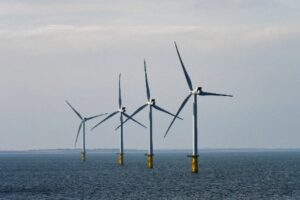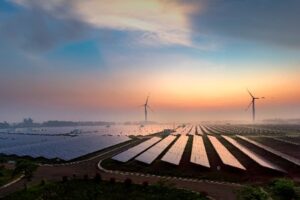Green hydrogen will make up more than a quarter of China’s H2 supply by 2035: Sinopec

2035 will be a turning point for green hydrogen in China, with costs finally falling and carbon penalties increasing to the point where it will displace more than a quarter of fossil H2 supply, according to state-owned oil giant Sinopec’s 2024 edition of its China Energy Outlook 2060 report.
While China has installed 610MW of electrolyser capacity to date — more than half of the world’s total — this would produce less than 85,000 tonnes of hydrogen even if all projects were operating at nameplate capacity.
Sinopec itself has admitted that its 260MW Kuqa project is only operating at 20% capacity, with problems unlikely to be resolved before late 2025.
According to Sinopec, the country consumed 35.49 million tonnes of hydrogen last year, with 64.6% of this supplied from coal gasification — the most carbon-intensive method of making H2 — only 0.5% from dedicated water electrolysis, and the remainder from steam methane reforming or as a by-product from other processes.
Overall hydrogen supply is predicted to increase even further to 38.1 million tonnes by 2030 and 42.64 million tonnes by 2035.
However, the oil giant predicts that green H2 production will increase to three million tonnes by 2030, before nearly quadrupling to 11.88 million tonnes in 2035, representing more than a quarter of the country’s overall H2 supply.
Article continues below the advert
This boom is expected to come on the introduction of stricter penalties for carbon emissions on incumbent hydrogen production, according to Sinopec. While China’s national emissions trading scheme currently only covers the power sector, the government had suggested on introduction in 2017 that it could be expanded to cover other industries in future.
Sinopec predicts that falling renewable electricity costs, automated manufacturing, and improvements in electrolyser technology will all drive down the price by 2035 to the point where large-scale projects can be built to supply large volumes to the domestic market.
However, the oil firm is more bearish when it comes to the development of blue H2 — made from fossil fuels with carbon capture and storage (CCS) — as it describes the economics as “not as good as grey hydrogen [derived from unabated fossil fuels] in the short and medium term, and not as good as green hydrogen in the long term”.
As such, Sinopec expects that more than half of overall Chinese hydrogen supply will come from renewable H2 from 2040. Meanwhile, although the company predicts that 85.8 million tonnes of hydrogen will be produced in China by 2060, it also anticipates 89.5% of this, or 76.8 million tonnes, will be green, while only 7% will be blue.
Part of the major growth in overall hydrogen demand is expected to come from a wider range of sectors using hydrogen.
While H2 is currently almost entirely used in refining and as a chemical feedstock, such as for ammonia or methanol production, Sinopec predicts that those sectors will only represent 58% of hydrogen consumption by 2060, with transport’s share growing from almost zero today to 33%.
However, this growth in transport is mainly expected to come from the increasing use of H2 and its derivatives as a fuel in aviation, shipping and long-distance heavy-duty road transport.
Up to 2035, Sinopec anticipates “electricity will play a leading role in the green and low-carbon transformation”, with a predicted increase in electricity consumption from around 8,700 terawatt hours today to 12,200 terawatt hours by that year as more processes are directly electrified.






